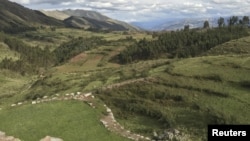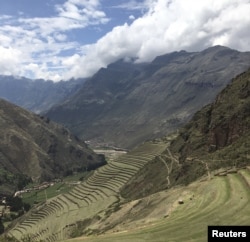When the first prehistoric people trekked into South America toward the end of the Ice Age, they found a wondrous, lush continent inhabited by all manner of strange creatures like giant ground sloths and car-sized armadillos.
But these hunter-gatherers proceeded to behave like an "invasive species," with their population surging, then crashing, as they relentlessly depleted natural resources. Only much later did people muster exponential population growth after forming fixed settlements with domesticated crops and animals.
Those are the findings of research published Wednesday in the journal Nature that provides the most comprehensive look to date at the peopling of South America, the last habitable continent colonized by humankind.
The researchers identified two distinct colonization phases. The first unfolded about 14,000 to 5,500 years ago, with the human population hitting around 300,000, and the second occurred about 5,500 to 2,000 years ago, with the population reaching about 1 million.
"Humans are just like any other invasive species," Stanford University biology professor Elizabeth Hadly said. "If we use up our resources, we will decline. It is stating the obvious, but our study shows that even over vast geographic areas such as continents, humans can consume too much, too fast."
The researchers reconstructed the history of human population growth in South America using radiocarbon-dating data from 1,147 archaeological sites.
Africa first
Our species first appeared in Africa about 200,000 years ago, then spread to Europe and Asia and eventually crossed into the Americas roughly 15,000 to 20,000 years ago, using a land bridge that once connected Siberia and Alaska.
The first phase of colonization in South America coincided with the extinction of many large animals, including elephant relatives, saber-toothed cats, big ground sloths, armadillos and huge flightless birds.
During this period, human populations underwent "boom-and-bust cycles" as people exhausted local plant and animal resources, Stanford anthropologist Amy Goldberg said.
Some people, particularly in certain Andes regions, began domesticating animals and growing crops, including squash and peppers. But most remained nomadic.
About 5,000 years ago, people settled into stable societies, launching 3,000 years of exponential growth when the continent's population roughly tripled, Goldberg said.
"We find that it is the large settlements, not merely stable food sources, that allow humans to 'conquer' their environment and grow unbounded," Goldberg said. "Most lived in modern Peru, Ecuador and northern Chile, as well as a smaller but substantial population of hunter-gatherers in Patagonia."










